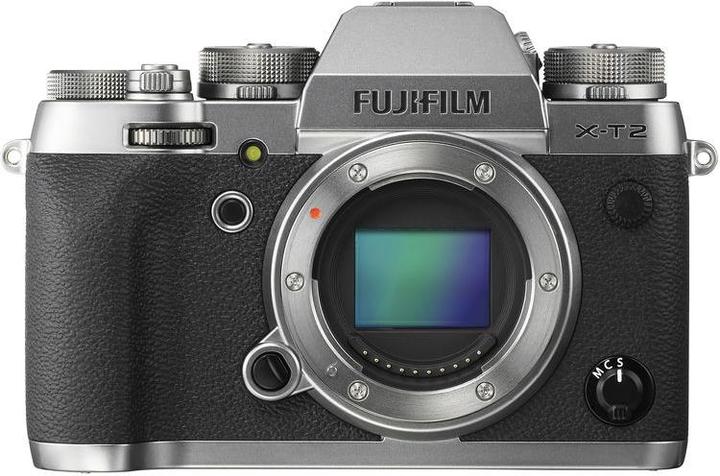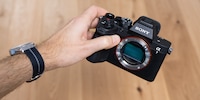

New trend: old cameras remain available for a long time
Old cameras remain on the market longer than before. Manufacturers offer them as a favourable alternative to current models. This says a lot about the pace and level of innovation.
It usually takes between one and four years for a new camera model to replace the old one. It then remains available at a reduced price for a while before disappearing from the shelves. This has been the case for the longest time in the digital camera market.
However, times are changing. Cameras in shops that have been around for more than three years are no longer the exception, but the rule.
There are now seven generations of the Sony RX100. Or even eight, if I include the RX100 VA. It is a halfway house between the fifth and sixth generation. Even the very first model from 2012 is still available new.

Ten years ago, this would have been completely unthinkable. If you had tried to get rid of a camera from 2002 at half the original price in 2010, you would have been laughed at. Today it's no problem.
This shows that technical development has slowed down. Above all, however, improvements are now taking place at such a high level that they are no longer necessarily needed. That was completely different ten years ago.
The RX100, for example, all have a resolution of 20 megapixels. That hasn't changed by a single pixel in eight years.
Of course, there are still people who have to have the latest and greatest. But this group is getting smaller and smaller. The new models are niche products and correspondingly expensive. The smaller the quantities, the more expensive the production. In Switzerland, the new and expensive devices sell quite well, but Switzerland is an exception and insignificant in the global market.
System cameras: grandpa attracts new customers
Sony is still producing the first Alpha 7. It dates back to 2013.
The reason seems obvious to me. The old model serves to lure new customers into the system with a favourable offer. Mirrorless full-frame cameras from 2020 are much more expensive.
What do I mean by "lure into the system"? With system cameras, you buy lenses. You quickly get to the point where the lens collection is worth more than the camera. And the lenses become obsolete less quickly. You want to continue using them and therefore buy a new camera from the same manufacturer.
Once you're in a camera system, you don't change so quickly. That's why it's important for manufacturers to attract new photographers to their system.
With an outdated but affordable model, Sony can steal a march on Canon and Nikon in particular. Because they cannot copy this strategy. Canon and Nikon have only been in the full-frame mirrorless camera business since 2018 and therefore don't have any old models.
Canon has launched the EOS RP, which is also affordable. Nikon has yet to launch a model in this price range. The Nikon Z 50 would fit in terms of price, but is not a full-frame camera.
The others do it too
Other manufacturers are also following the trend of continuing to offer old cameras. When the Fujifilm X-T2 was released in 2017, the X-T1 disappeared from the market. However, when the X-T3 was released, its predecessor remained on sale. We now have the X-T4, and its predecessor is still available.
When it comes to SLR cameras, there are also very old models that you can still buy new. The first Nikon D750 was sold by digitec on 10 October 2014 for 3085 francs. Six years later, the camera is still available - and is actually still being bought.
There is now a successor model to this device, the D780. However, this is often not the case with SLR cameras. The Nikon D500 from 2016 currently has no successor. This also applies to the Canon EOS 7D II from 2014. Or the Canon EOS 5Ds from 2015.
It is questionable whether there will ever be a successor to these models. The development of SLR cameras will slow down and manufacturers will focus their resources primarily on the production of mirrorless systems.
Firmware updates extend the service life
Firmware updates can not only fix bugs, but also add or improve functions. As a result, the camera becomes obsolete less quickly. Currently, this mainly affects the autofocus
The trend towards more updates is not entirely unproblematic. I think you have to differentiate between two cases here. If a manufacturer announces a firmware update for a brand new camera, this means to me that they are behind schedule with development. This approach does not deserve any applause. It's a different story when a manufacturer is still keeping its year-old cameras alive with functional updates.
Fujifilm has a very good reputation in this respect. The X-T2 mentioned above, the predecessor of the current model, still receives updates. The last update dates back to September 2020, although these are only bug fixes. The last update, which extends the function, dates from June 2018. The X-T3 is currently still being supplied with functional updates. An update that improves the autofocus performance will be released on 28 October.
The prices
The older cameras are naturally cheaper than the new ones. However, this is only partly due to the fact that they fall in price over time. It is also because the newer cameras are more expensive when they are launched than they used to be.
Here are the prices of the RX100 models at market launch. As I don't always have clear information on the recommended retail prices (RRP), I'm using the price of the first device sold at Digitec Galaxus AG.
| Model | Initial selling price |
|---|---|
| RX 100 I | 689.- |
| RX 100 II | 679.- |
| RX 100 III | 849.- |
| RX 100 IV | 1079.- |
| RX 100 V | 1299.- |
| RX 100 VI | 1499.- |
| RX 100 VII | 1449.- |
Even if II and VII are lower than the previous model, the trend is clear.
The new models are not only more modern (faster processor, better sensor), they are also better equipped. The viewfinder from model III, the lens with much more zoom from model VI or the microphone input from model VII: these features would have been technically possible earlier, but would have made the camera more expensive. The equation "newer = better = more expensive" is therefore not just the result of technical progress, but is apparently part of a long-term strategy. At least at Sony.
Buy or not to buy?
Does it make sense to buy a camera that is already several years out of date from the factory? That depends entirely on your requirements, your budget and, above all, your intended use.
At the beginning of 2020, I wrote an article about the areas in which developments are progressing quickly and those in which they are not. Brief summary: Video and autofocus are currently undergoing the most changes. When it comes to autofocus, the main focus is on subject recognition using artificial intelligence. This is particularly important for sports and wildlife photography.

If you are particularly interested in these areas, you should not go for an older model. With sports and wildlife photography, the hobby will cost you a fortune if you want good results. Not only do you need a fast and good camera, you also need really expensive lenses. So it would also be a bit daft to save on the camera by opting for old technology.
I don't see a problem with older models for landscape photography. Macros and portraits should also work, but it depends much more on the lens. With portraits, the lack of eye autofocus could be a bit of a problem at best.
My interest in IT and writing landed me in tech journalism early on (2000). I want to know how we can use technology without being used. Outside of the office, I’m a keen musician who makes up for lacking talent with excessive enthusiasm.
Interesting facts about products, behind-the-scenes looks at manufacturers and deep-dives on interesting people.
Show all





